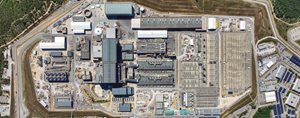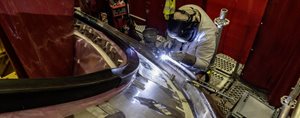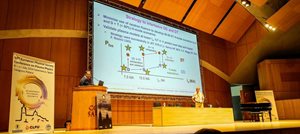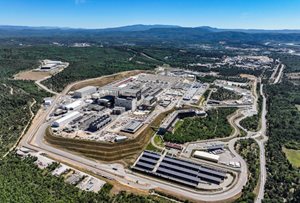
Tritium can be produced through the impact of fusion-generated neutrons on lithium nuclides present in the plasma-facing components. Based on this principle, six experimental Test Blanket Modules will be installed at the equatorial ports of the ITER vacuum vessel wall.
Self-sustained tritium production is essential to the future of fusion. While an experimental machine such as ITER will draw upon the tritium presently available in the market (a couple dozen kilos), future fusion plants will have to breed their own tritium supply in a continuous manner.
Tritium, which occurs only in trace quantities in nature, can be produced through the impact of fusion-generated neutrons on lithium nuclides present in the plasma-facing components. Based on this principle, six experimental Test Blanket Modules (
TBM) will be installed at the equatorial ports of the ITER vacuum vessel wall. Two of them will be procured by Europe; India, China, Japan and Korea will each contribute one. The Russian Federation and the Unites States will give support on specific technical items.
Over the years, as they are impacted by the neutron flux, the ITER TBMs will progressively become activated. "However different each TBM concept may be, we can reasonably anticipate the amount of radwaste that will be produced within the Tritium Breeding Systems (TBSs) and that we will have to manage," explains Magali Benchikhoune, the ITER Hot Cells & Radwaste Section leader and chair of the Test Blanket Program Working Group on TBS RadWaste Management (TBP-WG-RWM) that has been assigned to deal with this matter.
Following three and a half months of videoconference meetings, the international players of the TBP-WG-RWM met for two days—and for the first time in person—last week at ITER.
The group comprised the ITER Members' Test Blanket Module representatives; ITER Organization representatives for the TBM Program, radwaste management and safety; legal experts from all the contributing Members; and representatives from Agence Iter France (as the interface between ITER and the Host country, France).

Following three and a half months of videoconference meetings, the international players of the Test Blanket Program Working Group on TBS RadWaste Management met for two days—and for the first time in person—last week at ITER.
Once the breeding experiments are completed, the activated TBMs will go back for further analysis to the ITER Member who procured them. The rest (and the largest part) of each system will go into interim storage and, eventually, to a permanent disposal facility managed by the French Nuclear Waste Management Agency
ANDRA.
How to approach this issue? What are the realistic options to manage and transport the irradiated components? What are the cost drivers? What can be optimized? These questions were central to the meeting that summarized and developed the work accomplished since the Working Group kick-off meeting on 19 July. "Whether from ITER, Agence Iter France, CEA or the ITER Members," says Magali, "we all worked hard and the two-day meeting was a very motivating experience for all of us."
The progress of the work by this Working Group will be reported to the
TBM Program Committee, which heads all TBM-related activities, during its meeting in early November.
- R.A.








